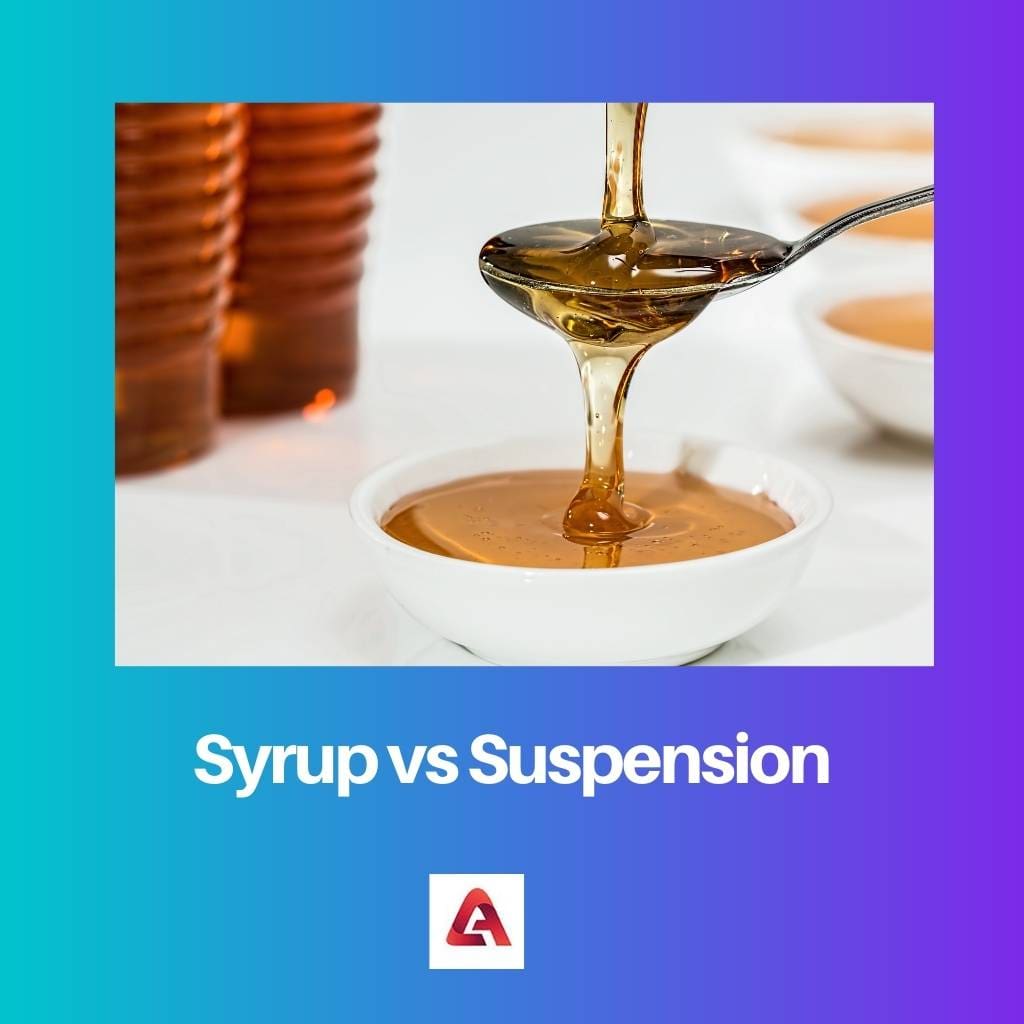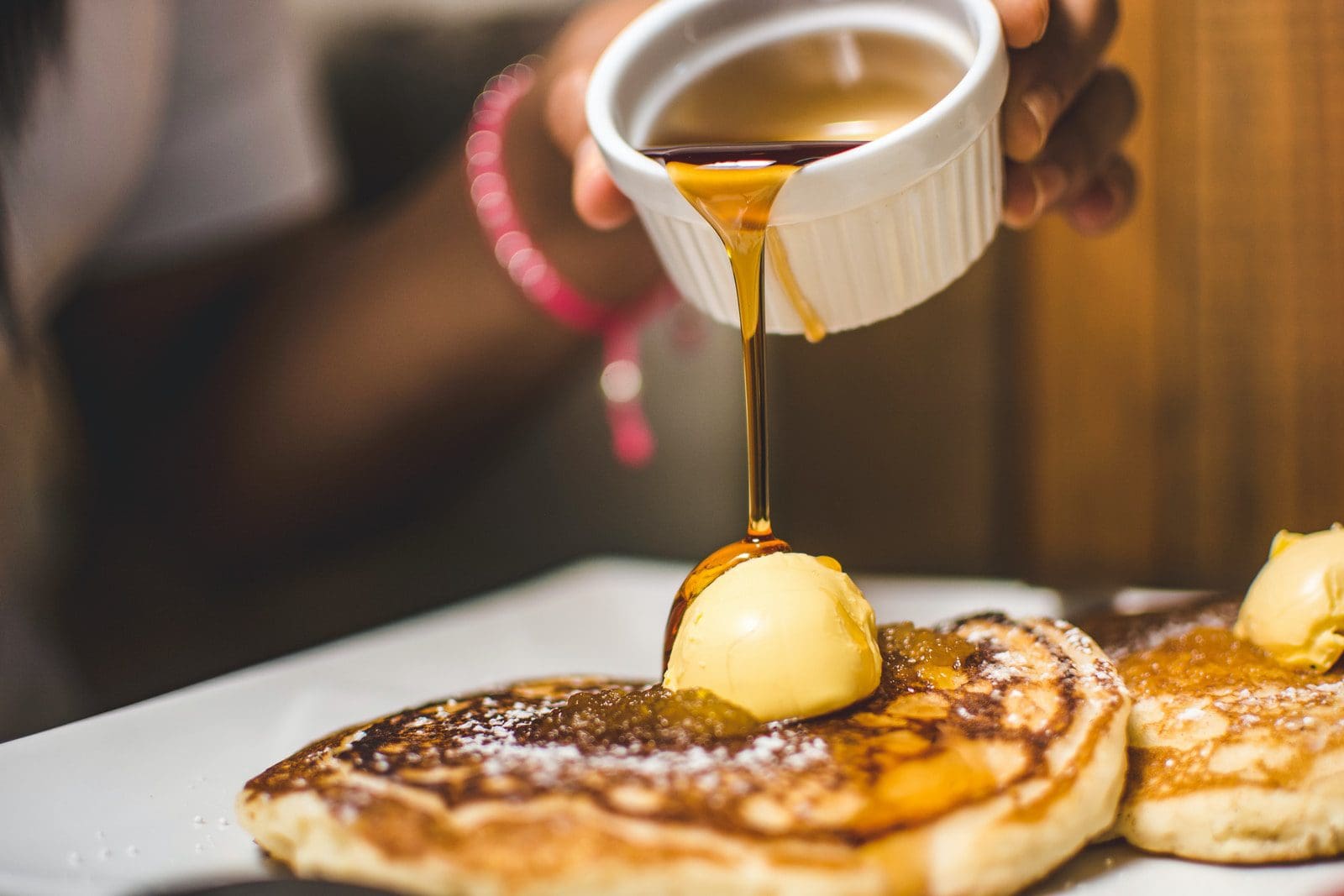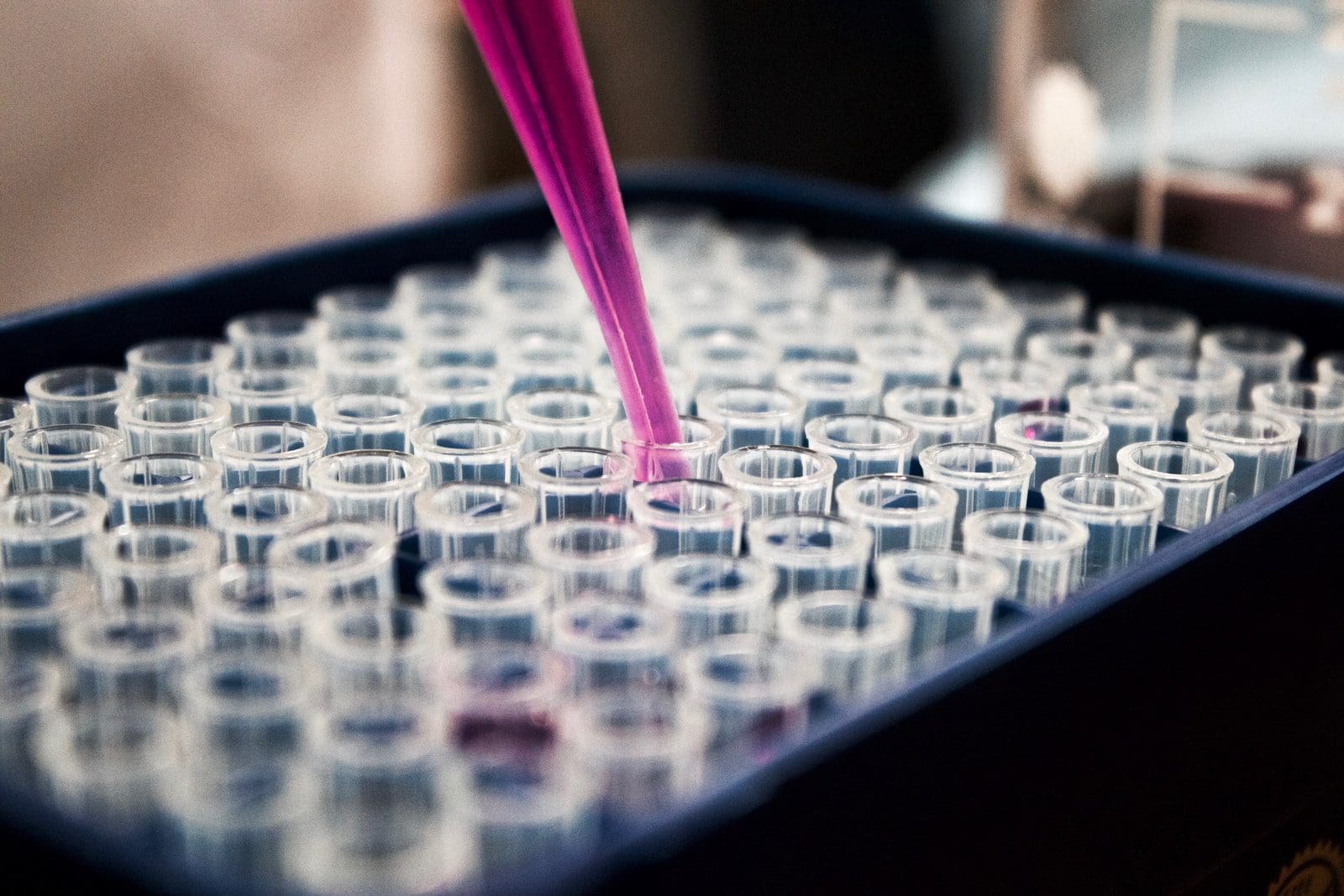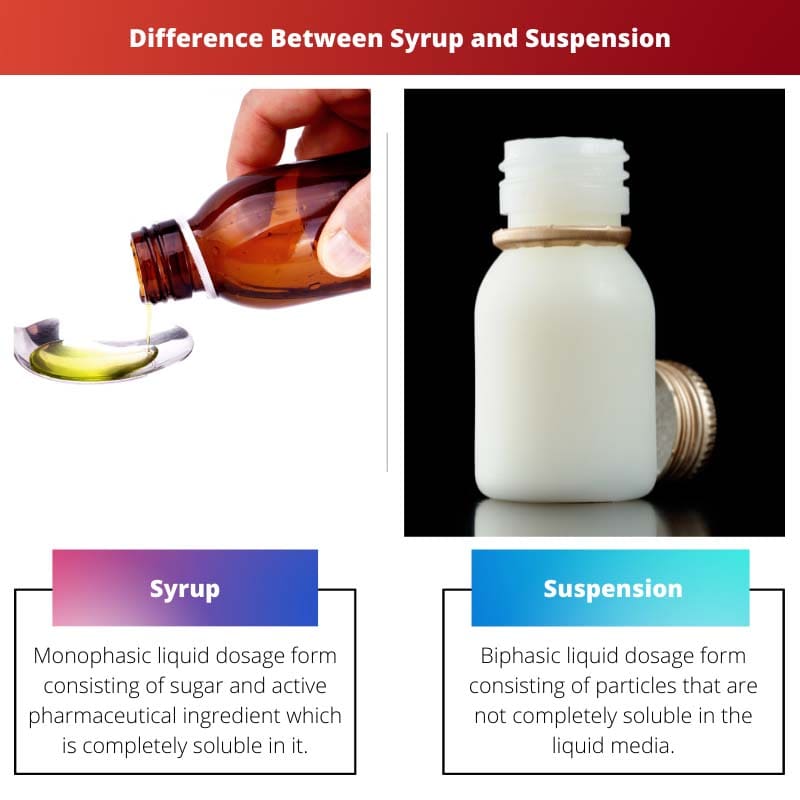Medicines are available in many forms for human consumption. Some are tablets, capsules, syrups, suspensions, emulsions, injections, lozenges, etc. These are taken based on the compatibility of patients.
Key Takeaways
- The syrup is a type of liquid medication containing a high sugar concentration, while suspension contains solid particles suspended in the liquid.
- The syrup is easier to swallow and may taste pleasant, while the suspension may be unpleasant and require shaking before use.
- Syrup may be more effective for treating coughs and sore throats, while the suspension may be more effective for treating bacterial infections.
Syrup vs. Suspension
Syrup is a solution consisting of sugar readily dissolvable in other solvents, while suspension is a biphasic liquid system containing insoluble solute particles in the fluid medium. The drug is entirely soluble in syrup, while the rest consists of solid particles in the liquid phase.

Syrup is a liquid dosage form consisting of sugar and active pharmaceutical ingredient that is utterly soluble. Syrups are a transparent monophasic liquid system with a homogeneously mixed active ingredient.
The particles are in motion so they can settle down in a bottle and be re-dispersed when shaken. The distribution of the drug or the active pharmaceutical ingredient should be uniform when the suspension is shaken.
Comparison Table
| Parameters of Comparison | Syrup | Suspension |
|---|---|---|
| Definition | Monophasic liquid dosage form consists of sugar and active pharmaceutical ingredient completely soluble in it. | The biphasic liquid dosage form consists of particles not completely soluble in the liquid media. |
| Solvent system | Syrups can be aqueous-based or alcoholic syrups (called elixirs). | Suspensions are water-based systems. |
| Ideal for | Young children and the elderly are more compatible with syrup due to its sweet taste. | Ideal for diabetic patients who cannot administer syrup due to the presence of sugar. |
| Phases | A monophasic dosage form as the drug is completely dissolved. | A biphasic dosage form as the solid particles are not completely dissolved. |
| Types (based on usage) | Simple syrup, medicinal syrup, elixirs, flavored syrup | Oral suspension, parenteral suspension, topically applied break (creams, lotions). |
What is Syrup?
Syrup is a solution containing sugar and an active dissolved pharmaceutical ingredient. This solute is completely dissolved in the solvent, and the resulting mixture is called a homogeneous solution.
The solute particles are evenly distributed throughout the solvent system. This is one of the significant advantages of this formulation.
Syrups can be aqueous-based systems or alcohol-based systems. The alcohol-based syrups are known as elixirs.
Syrups can be of different types. The simple syrup is a sucrose solution having a concentration of 66.66% sucrose in water (e.g., Syrup USP).

What is Suspension?
Suspension is a colloidal system having solid particles undissolved in the liquid phase. The particle size of the solid particles in suspension is in the range of 1 μm.
This is why suspensions need to be shaken before administration so that the particles get evenly distributed. All the breaks have instructions on their label: Shake well before use.
The external phase is also known as the suspending medium. There are two types of suspension: flocculated and deflocculated.

Main Differences Between Syrup and Suspension
- Syrup is a sugar solution with uniformly distributed active pharmaceutical ingredients or drugs. At the same time, the suspension is a heterogenous mixture where the drugs are not completely dissolved in the liquid media.
- The solvent system can be aqueous or alcoholic, while suspensions are aqueous-based.




